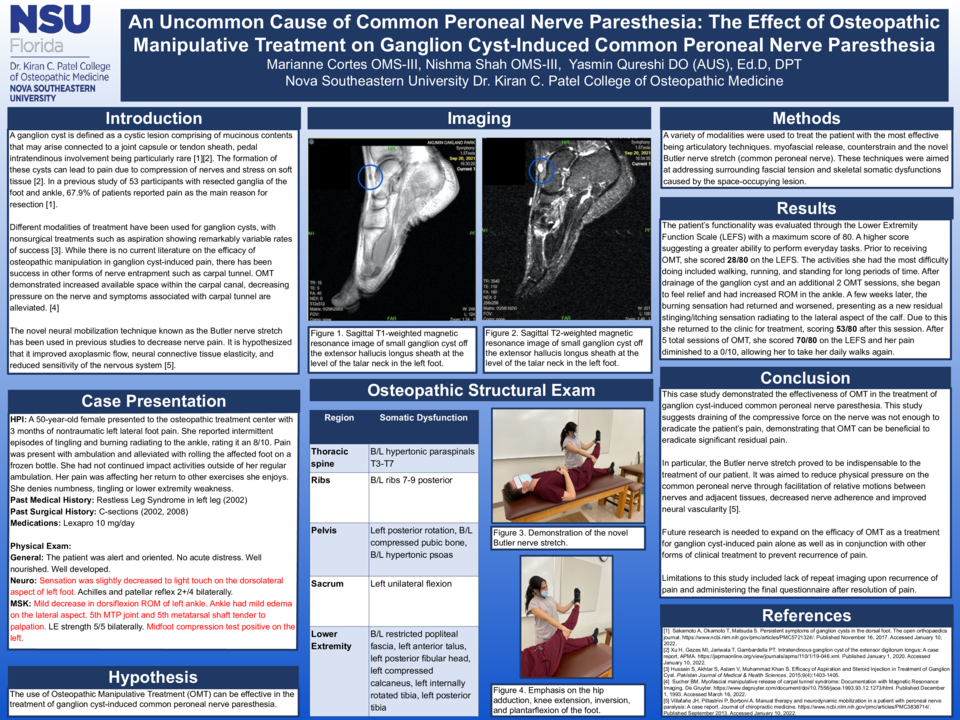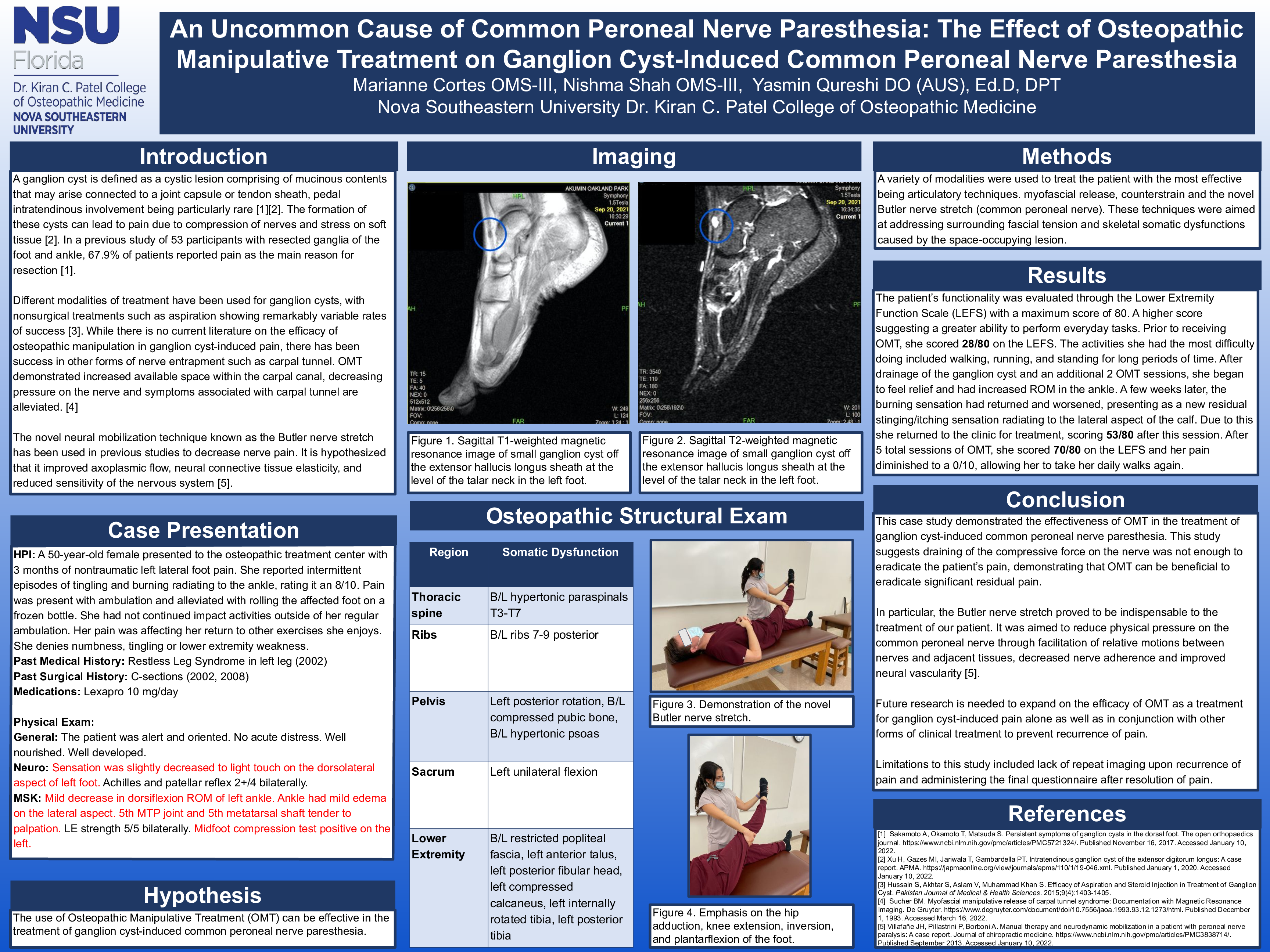Abstract
Introduction/Background: Ganglion cyst formation can lead to pain due to compression of nerves and stress on soft tissue. In a previous study regarding CTS, OMT demonstrated increased available space within the carpal canal, decreasing pressure on the nerve and symptoms.
Case: A 50-year-old female presented with 2 months of nontraumatic left lateral foot pain. She reported intermittent episodes of tingling and burning radiating to the ankle, rating it 8/10. Physical exam revealed decreased dorsiflexion ROM and decreased sensation on the dorsolateral aspect on the left foot. MRI imaging revealed an intratendinous ganglion cyst in the extensor hallucis longus which was drained, decreasing her pain to 5/10. Osteopathic structural exam revealed a short leg. The most effective OMT modalities were articulatory techniques, MFR, and the novel Butler nerve stretch (common peroneal nerve) as they addressed surrounding fascial tension.
Results: The patient’s functionality was evaluated through the Lower Extremity Function Scale (LEFS). Prior to OMT, she scored 28/80. After drainage of the cyst and 3 OMT sessions, she felt relief and increased ROM in the ankle. A few weeks later, the burning sensation returned and worsened, prompting her to seek OMT. After the final treatment she scored 70/80 and her pain diminished to 0/10, allowing her to take daily walks again.
Discussion: This case study demonstrates the effectiveness of OMT in the treatment of ganglion cyst-induced common peroneal nerve paresthesia. This suggests draining of the compressive force on the nerve was not enough to eradicate the patient’s pain, demonstrating that OMT can be beneficial to eradicate significant residual pain. Limitations to this study included lack of repeat imaging upon recurrence of pain and administering the final questionnaire after resolution of pain.





